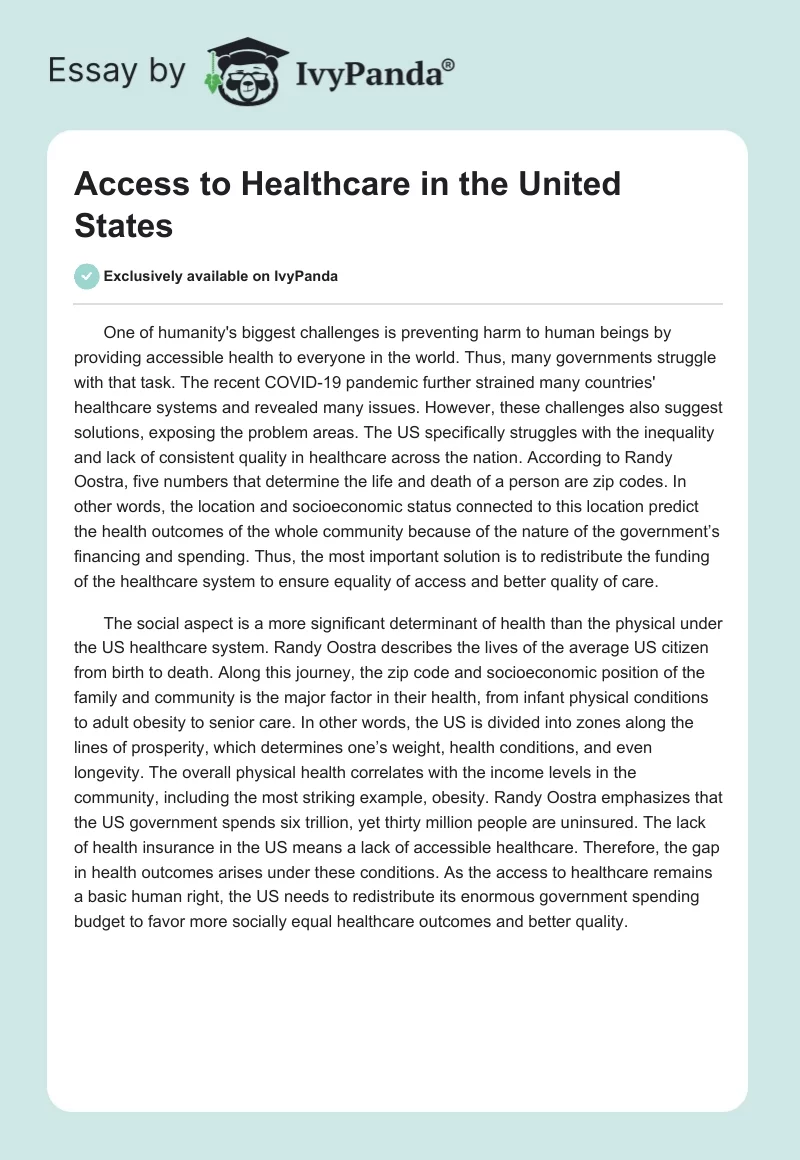One of humanity’s biggest challenges is preventing harm to human beings by providing accessible health to everyone in the world. Thus, many governments struggle with that task. The recent COVID-19 pandemic further strained many countries’ healthcare systems and revealed many issues. However, these challenges also suggest solutions, exposing the problem areas. The US specifically struggles with the inequality and lack of consistent quality in healthcare across the nation. According to Randy Oostra, five numbers that determine the life and death of a person are zip codes. In other words, the location and socioeconomic status connected to this location predict the health outcomes of the whole community because of the nature of the government’s financing and spending. Thus, the most important solution is to redistribute the funding of the healthcare system to ensure equality of access and better quality of care.
The social aspect is a more significant determinant of health than the physical under the US healthcare system. Randy Oostra describes the lives of the average US citizen from birth to death. Along this journey, the zip code and socioeconomic position of the family and community is the major factor in their health, from infant physical conditions to adult obesity to senior care. In other words, the US is divided into zones along the lines of prosperity, which determines one’s weight, health conditions, and even longevity. The overall physical health correlates with the income levels in the community, including the most striking example, obesity. Randy Oostra emphasizes that the US government spends six trillion, yet thirty million people are uninsured. The lack of health insurance in the US means a lack of accessible healthcare. Therefore, the gap in health outcomes arises under these conditions. As the access to healthcare remains a basic human right, the US needs to redistribute its enormous government spending budget to favor more socially equal healthcare outcomes and better quality.

